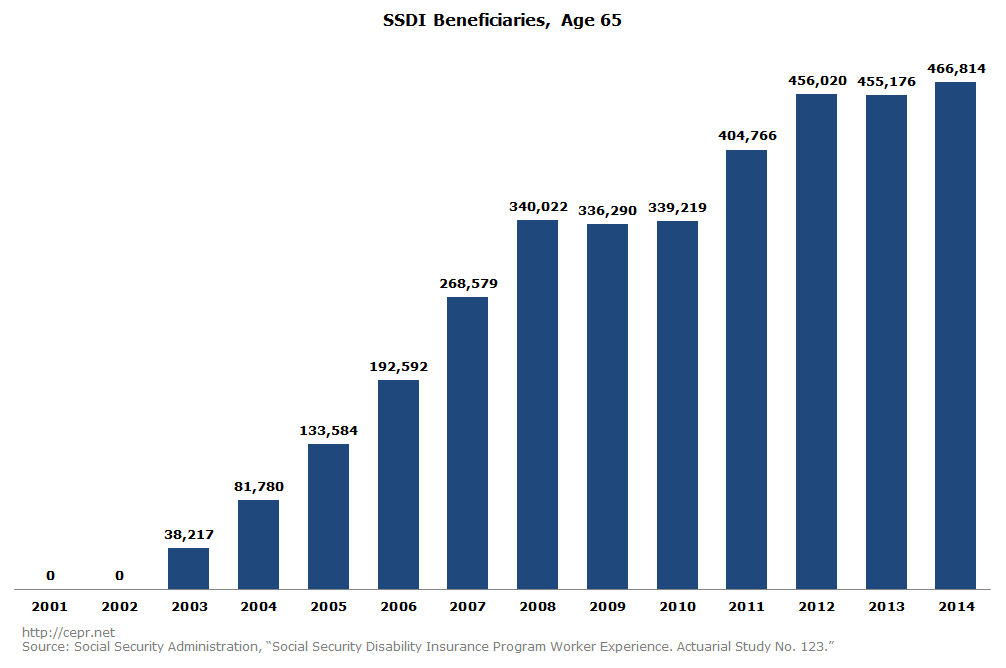October 30, 2015
Last week CEPR released a report titled Rising Disability Payments: Are Cuts to Workers’ Compensation Part of the Story? The report examined the extent to which cuts in state-level workers’ compensation programs have led to increased expenditures for the Social Security Disability Insurance (SSDI) program. The findings showed that up to a fifth of the increase in SSDI awards between 2001 and 2011 could be attributed to cuts in workers’ compensation programs.
Another obvious source of rising SSDI costs is the increase in Social Security’s full retirement age. The Social Security program maintains two distinct insurance systems: Old-Age and Survivors Insurance (OASI) for retired workers and their families, and Disability Insurance (DI) for workers who become disabled and can no longer work. Once someone on DI hits “full retirement age,” or the age at which retirees can begin receiving full OASI benefits, he is immediately transferred from the DI rolls to the OASI rolls.
Between December 2002 and January 2009, the OASI full retirement age was gradually raised from 65 to 66 years. Before 2003, no one over the age of 65 received DI benefits, because upon turning 65 they would be transferred to the OASI rolls. However, as the OASI full retirement age was increased, more and more 65-year-olds ended up on the DI rolls:

As of 2014, there were nearly 470,000 65-year-old worker DI beneficiaries. Given an average annual benefit payment of $14,758 (see Table A3 of CEPR’s recent report), this translates to about $6.9 billion in increased spending. This is over one-fifth of the $30.2 billion gap between the program’s total costs ($145.1 billion) and revenues ($114.9 billion) from 2014.
It should be noted that the full retirement age was increased for the purpose of cutting OASI expenditures. In doing this, policymakers transferred costs from the OASI program to the DI program. These same policymakers are now thinking about withholding funding from the DI program on the basis that this would require transferring revenues over from the OASI program. While transferring revenue to the DI program wouldn’t significantly affect the solvency of the OASI program, failure to do so will result in a 20 percent benefit cut for the nearly 11 million disabled Americans receiving SSDI.






